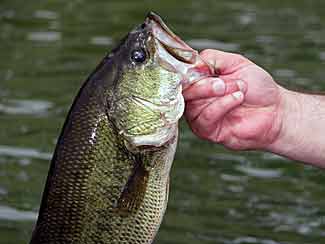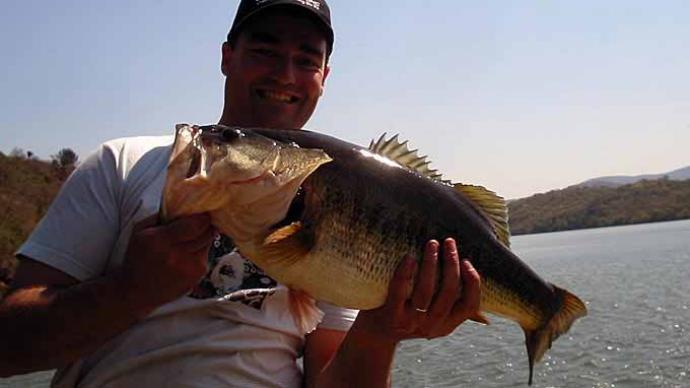
A recent study contained fascinating and significant thoughts about potential pond management; irrespective of one's position on climate change. Climate-Growth Relationships for Largemouth Bass (Micropterus salmoides) Across Three Southeastern USA States by Andrew L. Rypel in Ecology of Freshwater Fish 2009.© 2009 John Wiley & Sons A/S contains a litany of "why" management points for pond owners and managers.
Quoted below are some of the author's points (citations omitted) we should note for our management use. Note the bold text quotes added on small impoundments! As you read and think about these factors, consider if there is any connection to why Texas, Mexico and California are now known for big bass and how Florida, the birthplace for big bass, fits in the picture. Also, contemplate the effect of these principles upon other places and fish species. No doubt, there are effects be they positive, negative or neutral.
Significant relationships were found between annual indices of largemouth bass growth and climate variations. Annual growth indices were typically above average during the warmest, driest years (i.e., drought years) and below-average during the coldest, wettest years. Several factors could help explain such a pattern.
- Increased basal carbon resources during drought (i.e., bottom-up effects). Droughts and water-level reductions are known to stimulate the nitrogen and phosphorus cycles in aquatic ecosystems and cause spikes in primary production. If these resources are transmitted upwards through the food chain, tertiary predators such as largemouth bass should exhibit enhanced growth.
- Increased temperature during droughts. Temperature stimulates metabolism and enhances growth rates of warmwater fishes. A simple increase in temperature in these ecosystems during drought years could positively enhance growth rates of largemouth bass.
- Prey concentration during dry years and prey dilution during wet years. As water-levels retreat during drought, shoreline snag and shallow-water habitat for prey are lost. Without refugia, the probability of predators encountering prey increases, thus prey numbers and mass decrease as predators eat them. Vigorous bass growth during drought may therefore be linked to increased prey availability. Conversely, during wet years, prey refugia may become abundant causing predators to expend more energy seeking prey, resulting in below average somatic growth.
In this study, the two exceptions to this general pattern were Antioch Lake, GA, USA (which showed an opposite pattern) and Fort Mountain Lake, GA, USA (which showed weaker correlations to climate). These systems differ from the other study reservoirs in that they are small impoundments of creeks located in suburban Atlanta, GA, USA. Urbanization could potentially alter climate-growth relationships. For example, a change in the direction of correlation to precipitation (i.e., Antioch Lake) could be explained by an over-abundance of nutrients from surrounding suburban developments, to the point where growth is enhanced by runoff from nutrients during wetter years.
Furthermore, biotic factors may play much larger roles in determining bass growth in small impoundments, and may even buffer bass growth from climate variability. For example, annual variations in prey supply and bass population size could be of much greater consequence for bass growth in small impoundments than in other ecosystem types. Further research on sclerochronology of fishes in small impoundments is needed to better address these possibilities. Results from multiple regressions suggested that, on average, roughly 50% of the annual variability in largemouth bass growth was attributable to climatic variations.
This percentage varied across systems as some sites had high proportions of variation explained by climate (Satilla River, Savannah River) whereas others had low proportions explained (e.g., Fort Mountain Lake, Lowhead Lake). In general, rivers had higher coefficients of determination than reservoirs, perhaps because stream flow in the studied rivers is unregulated and might therefore be affected by climate vagaries more than reservoirs where stream-flow and water-levels are regulated.
The percentages of annual growth variation unexplained by climate are likely influenced largely by biotic interactions, e.g., density, competition. Again, this may be particularly true in small impoundments (especially those <40 ha), where increased densities of largemouth bass typically lead to reduced growth, size structure and condition.
Even in large impoundments and rivers, variations in biotic factors can explain large fractions of growth variation.
That's some thought provoking stuff for Pond Bosses about the factors affecting fish growth.
Reprinted with permission from Pond Boss Magazine



